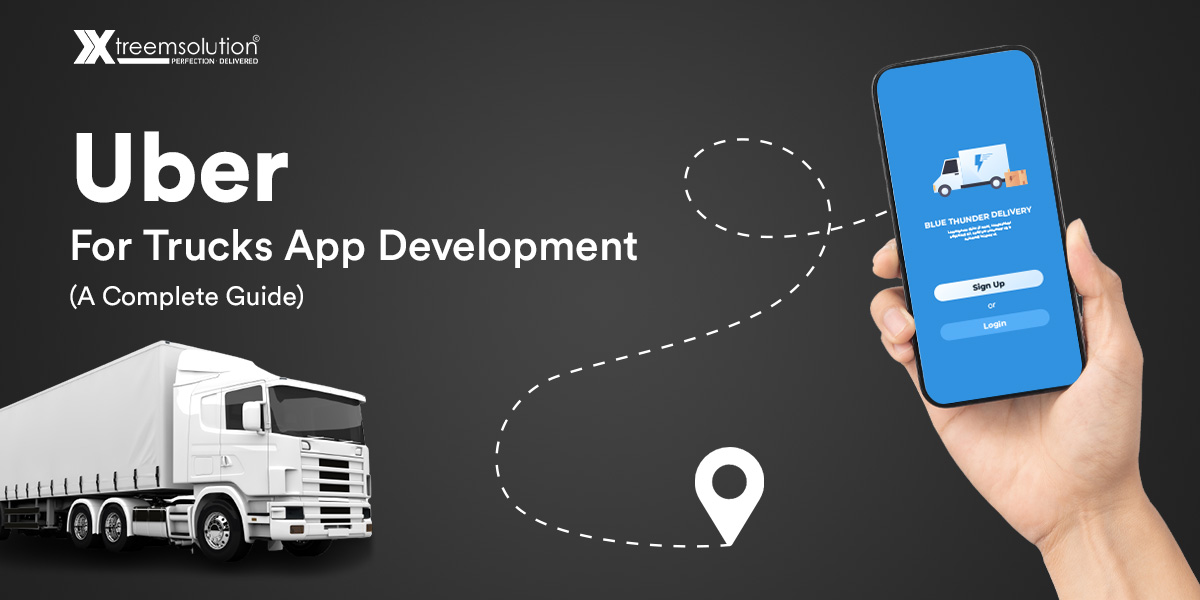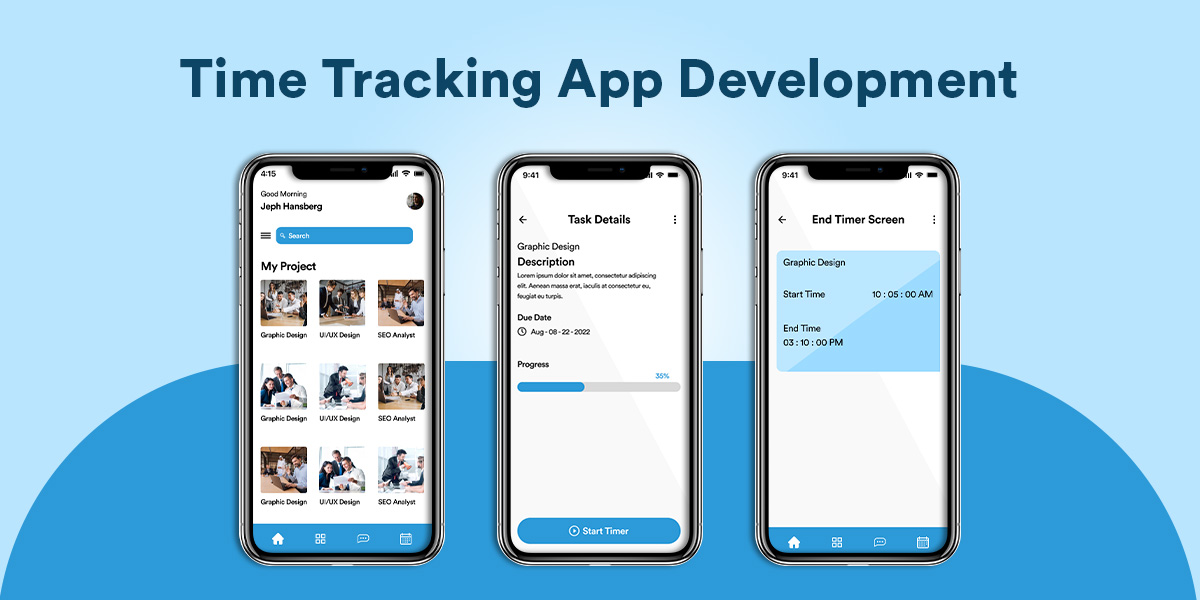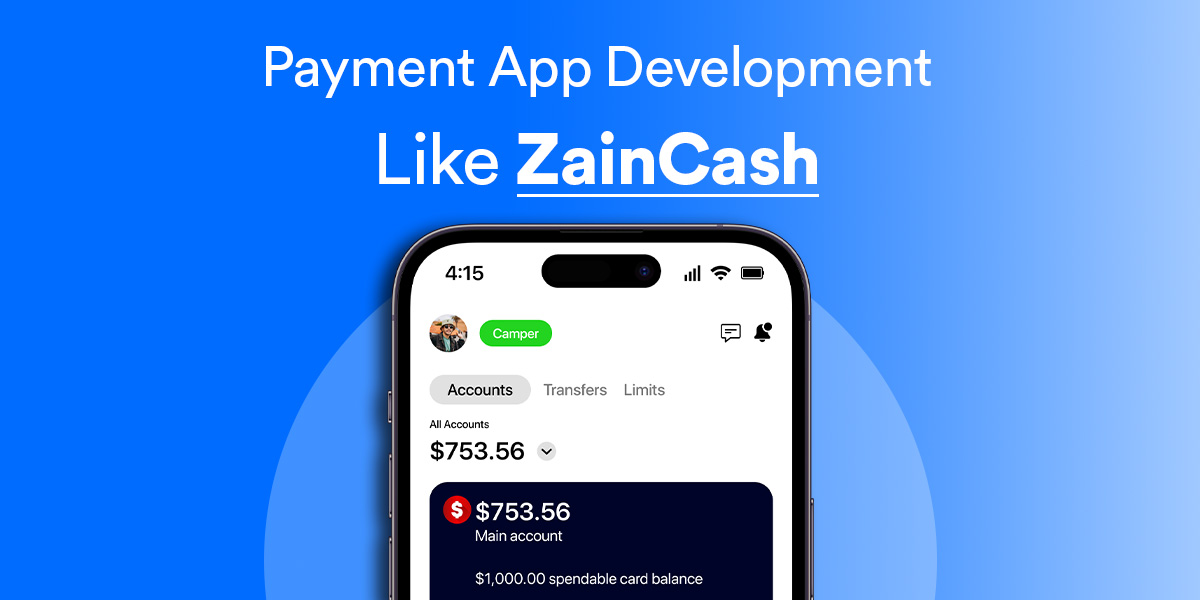In the context of logistics and transportation, trucking app development is becoming more technology-driven, helping them to facilitate trade conveniently even than before.
According to statista.com, the logistics industry worldwide was worth over 8.4 trillion euros in 2021 and is expected to exceed 13.7 billion euros by 2027.
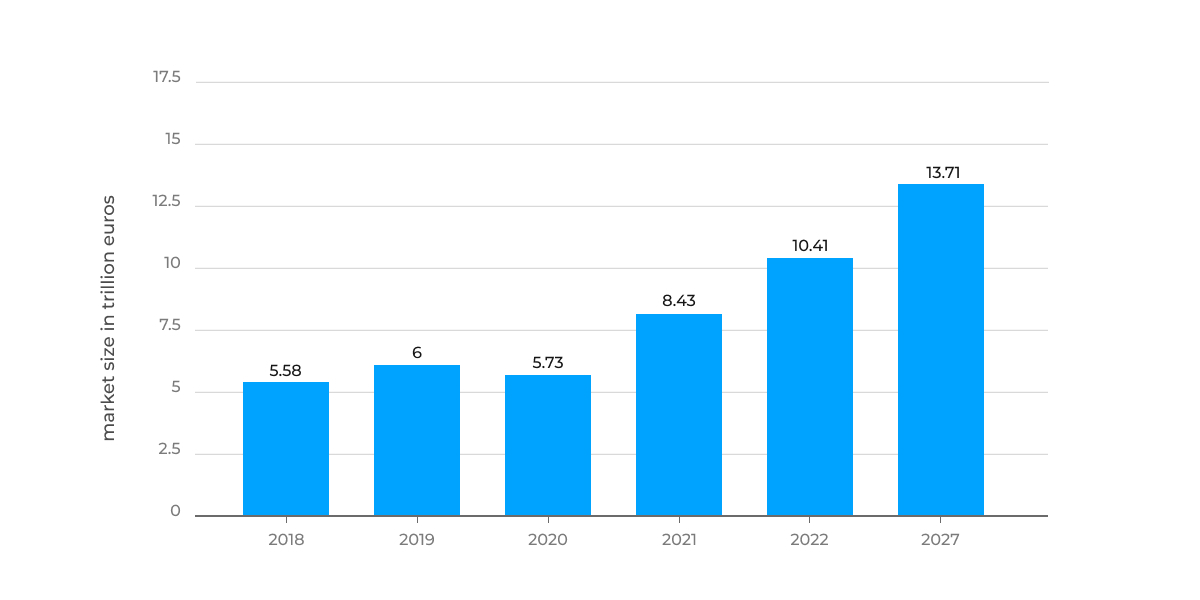
Many globally leading companies such as Uber and others are extremely helpful in facilitating entrepreneurial activities between two or more parties, efficiently and effectively.
You may have heard of Uber Freight which is a leading transportation app that is helping businesses move forward in transportation and logistics operations.
In today’s blog, we’ll discuss everything about Uber for trucking app development. We’ll pin out its features and benefits including apps similar to Uber for freight and trucking app development from scratch with cost estimation.
What Is Uber For Trucking App Development?
Uber for truck (or Uber Freight) is an app dedicatedly designed for carriers and shippers. The application matches carriers with shippers through a simple process.
The aim of the application is to streamline enterprises’ logistics and efficiently deliver customer shipments without any hassle.
So, basically, the app is for transporters (carriers) and merchants (shippers); helping merchants find the person to transport their products while, on the other hand, assisting drivers in finding consignors/customers.
If you use Uber Freight app, you will find the following performa or able to perform these sequences of actions.
Operating principle of Uber Freight app

- Search for a reliable truck via a matching algorithm.
- Book the truck in simple steps quickly and securely.
- Booking confirmation by carrier.
- Transportation delivery by carrier.
- Payment for rendered services.
Reasons To Design Your Own Uber-Like-App Solution
Growing demand for cost-effective logistics solutions: The logistics industry is growing and there is an increasing demand for efficient and cost-effective transportation solutions. An app similar to Uber Freight can address these needs.
Address a gap in the market: There may be a gap in the market for a similar app in certain regions or for specific types of freight, offering an opportunity for a new player to enter the market.
Utilize existing technology: The technology used by Uber Freight, such as GPS tracking and real-time updates, can be easily adapted for use in a similar app.
Generate revenue: A successful app similar to Uber Freight can generate significant revenue through fees charged to users and/or providers.
Improve the logistics industry: An app similar to Uber Freight can improve the logistics industry by streamlining processes and improving the overall experience for users and providers.
Best Trucking App Development In The Global Market
1. Cargomatic
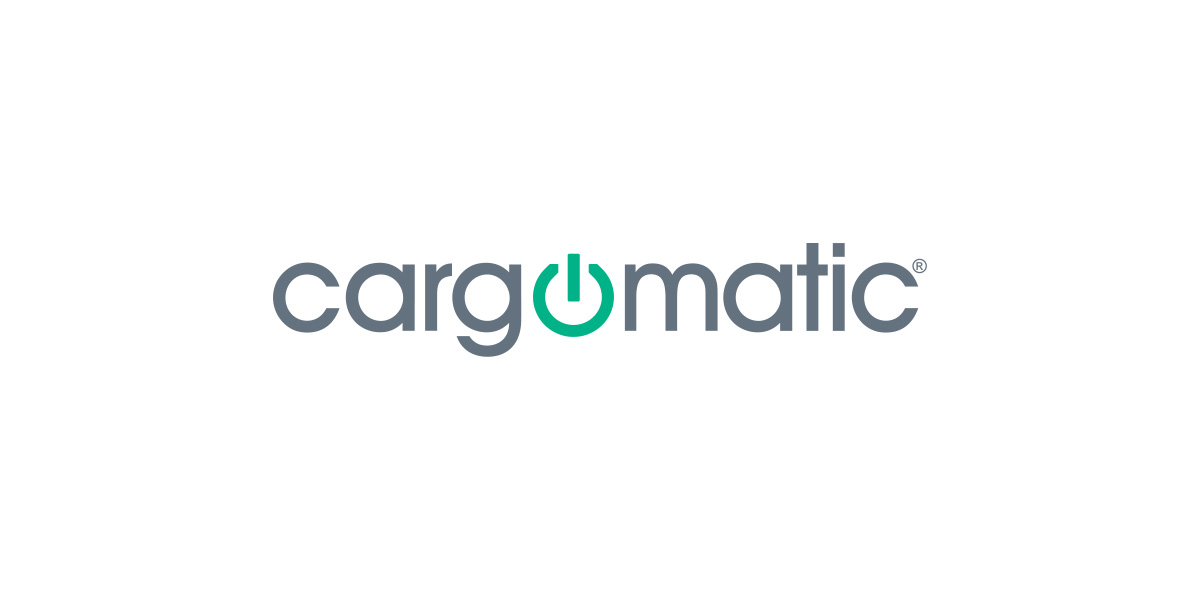
Founded year: 2013
Headquarters: Long Beach, California
Operate In: USA
Cargomatic observed as one of the best competitors to the Uber Freight app is a logistics company in California. Compared with Uber Freight, it has a less freight marketplace and operates only in the states of the United States.
The business module is similar to Uber-like app, intended to connect shippers with carriers seamlessly. Even the pricing planning goes parallel to Uber Freight solutions.
2. Motive (Formerly KeepTruckin)
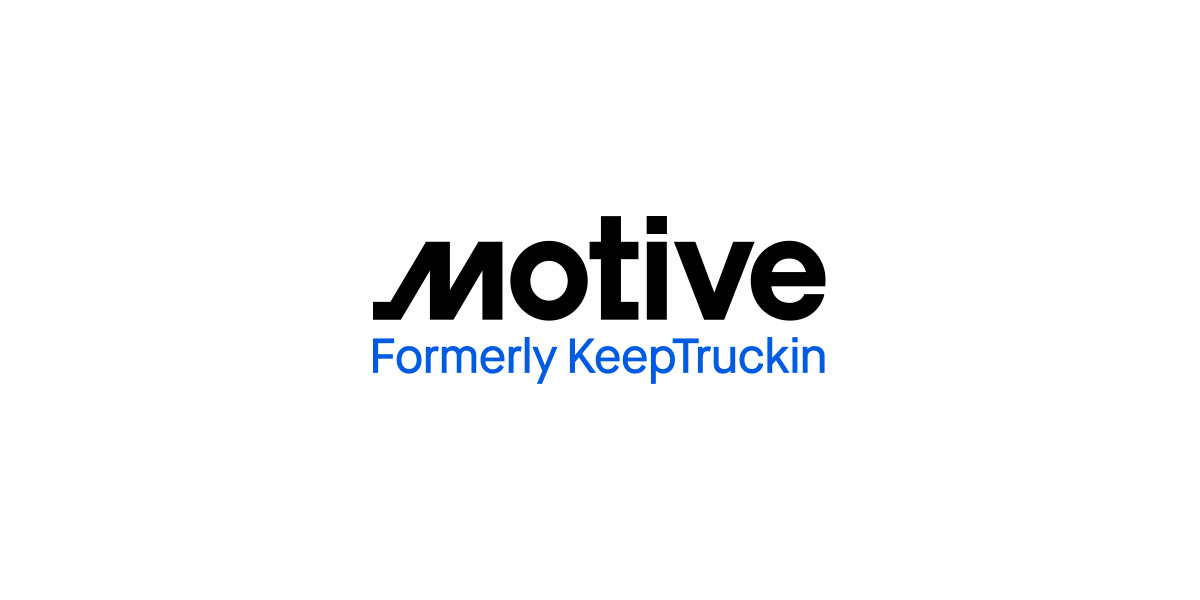
Founded year: 2013
Headquarters: San Francisco, California
Operate In: North America and Canada
Motive (aka KeepTruckin) offers convenient fleet management services through its one-stop platform. The platform offers all-in-one solutions to streamline logistic entrepreneurial activities efficiently and securely. The solution has helped shippers prevent accidents, mitigate risks, and assess driver behavior transparently.
Also read: How Much Does It Cost To Develop a Car Rental App Like Ekar
3. Convoy
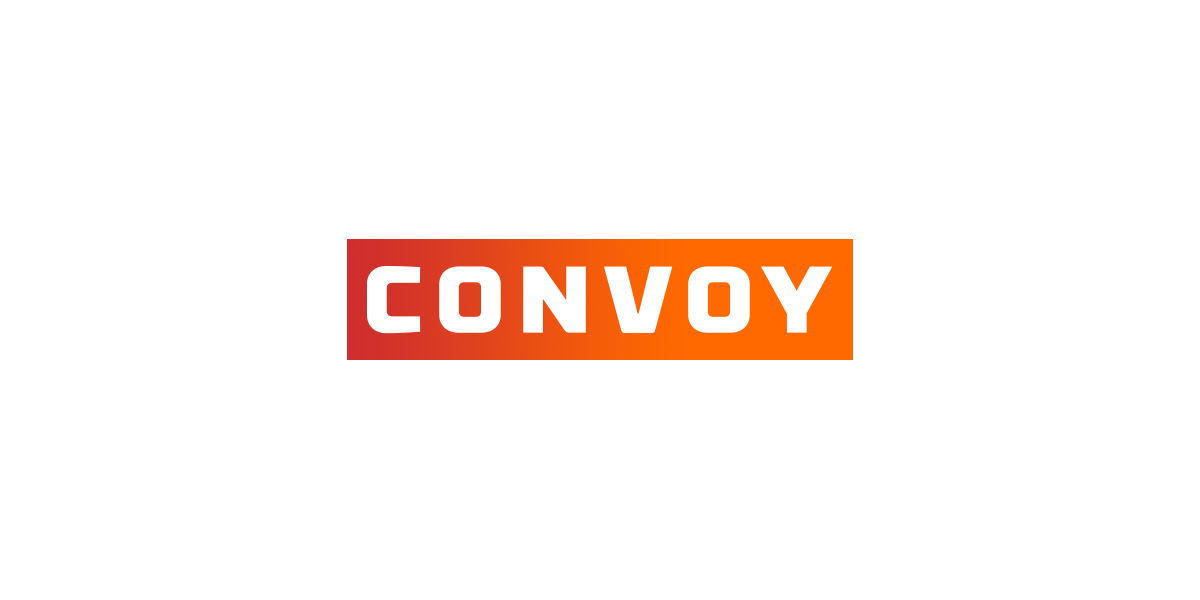
Founded year: 2017
Headquarters: Seattle, Washington, United States
Operate In: USA
Convoy is another Uber-like-app that is majorly equivalent to Uber Freight services. As explained, it is a digital freight network that accumulates huge freight marketplaces and efficiently connects shippers and carriers through their intelligent software solutions that use machine learning and automation.
This digital freight network has been used by various brands and companies such as P&G, Unilever, LG Electronics, and many more.
Understanding Uber For Trucking App Development Features
Uber Freight incorporates a number of features and a unique interface within the application. The application provides feasible functions to streamline processes without any hassle.
If you are planning to design a Uber-like app for trucks, you have to consider development for two communities; one is for drivers and the second for shippers. The requirement of features and interface design will highly depend on the role and targeted audience.
Let’s understand the features of Uber Freight app in detail, which is explained in three categories, mentioned below.
- Driver app
- Shipper app
- Admin app
-
Log in
-
Book orders
-
Find drivers
-
Map
-
Payments
-
Order tracking
-
Booking history
-
Help and support
-
Matching algorithm
-
Dashboard
-
Manager drivers/shippers
-
Enhanced security
-
Manage invoice & bills
-
Signup
-
Freight details
-
Navigation
-
Request history
-
Track earning
-
Help and support
Core features of Uber Freight driver app:
Signup: Easy registration process by filling basic information including approval of the administration.
Freight details: Help drivers to know about the shipment details with the freight’s weight, quantity, pick-up, and drop-off.
Navigation: It is important to provide an intelligent route navigation feature to help drivers reduce fuel consumption and increase delivery speed.
Request history: This feature assists drivers to check all the requests including upcoming and completed ones.
Track earnings: Enable drivers to glance and track their earnings made by rendering services and other programs.
Help and support: Helpdesk that makes drivers access the fleet management team or FAQs for common questions.
Core features of Uber Freight shipper app:
Log in: Registration by providing name, company details, address, emails, and contact number.
Book orders: Receive and confirm consignments and provide shipping details such as pick-up and drop-off with location, weight, and other details.
Find drivers: Ability to search and explore experienced and reliable drivers through matching-algorithm principle.
Map: To add a precise location for drivers to aid them driving conveniently, safely, and effectively.
Payments: Add secure payment gateway for collection and payment. You can think of credit cards, debit cards, digital wallets, Apple Pay, etc.
Order tracking: Critically an important feature that helps shippers to check real-time updates of the shipment through integrated GPS system.
Booking history: Allow shippers to check on all the bookings confirmed in the past and any pending for upcoming events.
Help and support: To assist shippers through real-time support or FAQs to solve their problems.
Core features of Uber Freight admin app:
Matching algorithm: An intelligent algorithm that connects shippers to drivers considering their needs and earlier requests.
Dashboard: An intelligent dashboard to check and screen almost everything from a freight delivery flow to current transportation orders.
Manage drivers and shippers: Ability to manage all the aspects and functions of drivers and shippers related activities.
Enhanced security: In order to protect several sensitive data related to shippers and drivers effectively.
Manage invoices and bills: Invoicing and billing features will help admin to manage securely all the invoices and bills carried throughout the application.
How To Build A Trucking App Like Uber Freight From Scratch?
If you’re planning to boost your logistic business or fleet management like Uber Freight solutions by creating an app similar to Uber for Freight, you may have to do a lot of hard work.
Here’s a snippet of successful launching of trucking app development from scratch.
1. Conduct market research
Conducting thorough market research is an important step in building a trucking app like Uber Freight.
This involves analyzing the logistics industry, studying the competition, and understanding the needs and expectations of potential users.
This will help you identify the gap in the market that your app can fill and determine the key features and functionalities that the app should have.
2. Define the scope of the project
Once you have conducted market research, you need to define the scope of the project.
This involves creating a project plan that outlines the features and functionalities that the app will have.
You should also decide on the timeline for the project and allocate resources accordingly.
3. Choose the right technology
Choosing the right technology is critical to the success of the project.
You should consider factors such as scalability, security, and ease of development when selecting the technology stack for your app.
You may want to consider using technologies such as React Native for the frontend and Node.js for the backend, along with a database such as MongoDB.
4. Design the user interface
Designing the user interface is a crucial step in building a trucking app like Uber Freight.
The interface should be user-friendly and visually appealing, with easy navigation.
You should also consider the user experience and incorporate features such as real-time updates and push notifications.
5. Develop the app
Once the design and technology have been chosen, you can start developing the app.
This involves coding the app, incorporating the features and functionalities that you have defined, and testing it thoroughly.
You should also consider security and privacy when developing the app and ensure that it meets all relevant regulations and standards.
6. Launch and market the app
After the app has been developed and thoroughly tested, it's time to launch it.
You should promote the app through various marketing channels, such as social media, online advertising, and email marketing, to reach a wide audience.
You should also offer incentives, such as discounts and promotions, to encourage users to try the app.
7. Monitor and improve
Once the app has been launched, it's important to continuously monitor its performance and make improvements based on user feedback and market trends.
You should regularly update the app to ensure that it remains relevant and competitive.
In summary, building a trucking app like Uber Freight from scratch involves conducting market research, defining the scope of the project, choosing the right technology, designing the user interface, developing the app, launching and marketing the app, and continuously monitoring and improving the app.
How Much Does It Cost To Develop Uber For Trucking App Development?
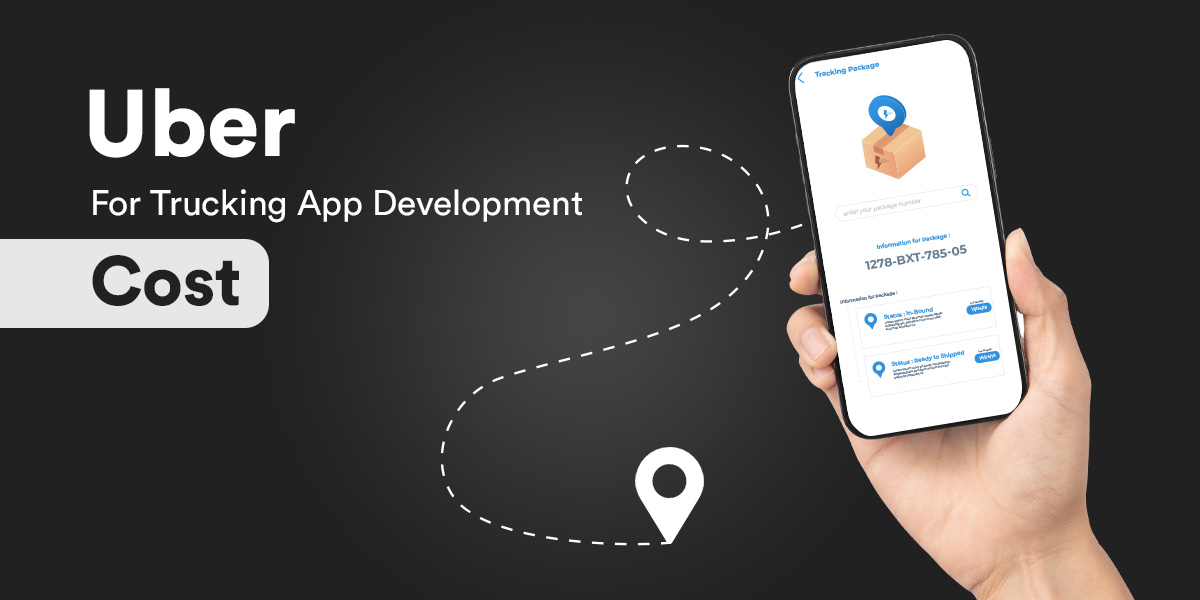
The cost factor for trucking app development sincerely depends on the apps’ features and complexity involvement.
Here, in this case, Uber Freight app development incorporates a number of features and multiple screens.
To give a rough estimation, the cost of developing a feature-rich app (one that is similar to Uber Freight) for just one platform (either for Android or iOS), can range between $30,000 to $40,000.
However, you can request a quote to know the approximate estimation for your app development idea.
Also read: Towing & Road Assistance App Development
Final Thought
There are a number of ways to earn when creating your own trucking app solution for your business. Some popular methods include targeted ads, paid functionality, and commission.
Additionally, to make your app competitive, it is important to study the competitor’s strengths and business modules to match head-to-head.
That’s all in this blog. I hope you found it insightful.
Planning to develop Uber-like-app for trucks?
Talk to our experts and see how they can help you innovatively.


